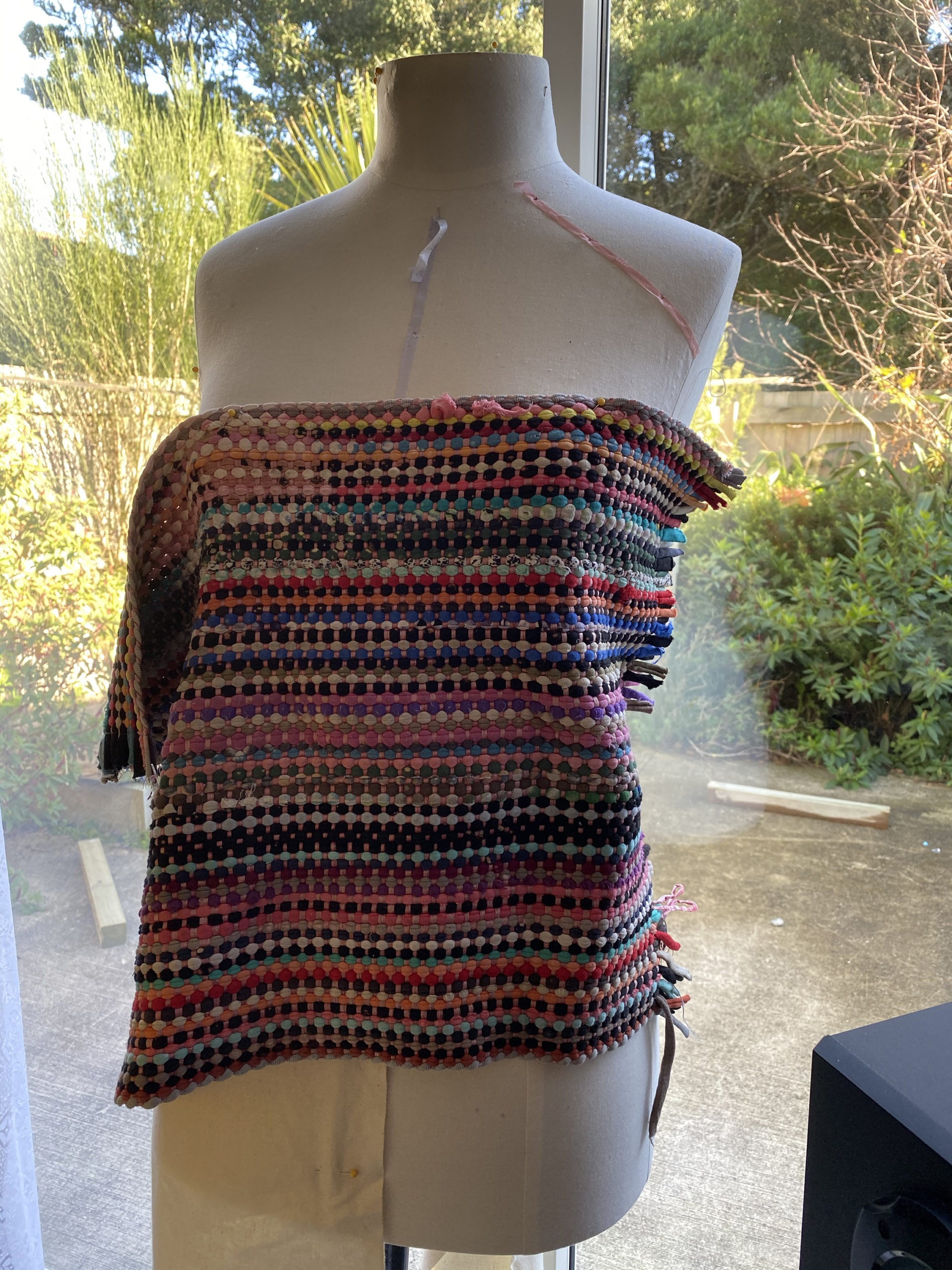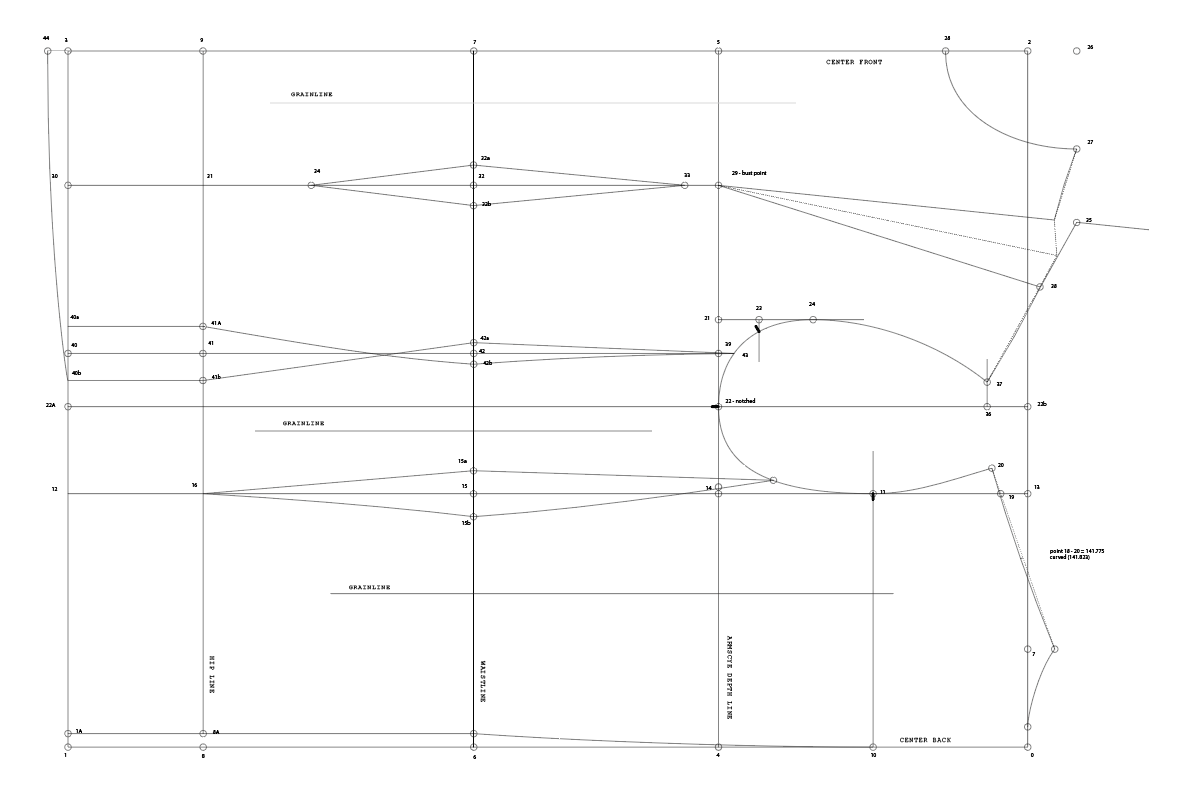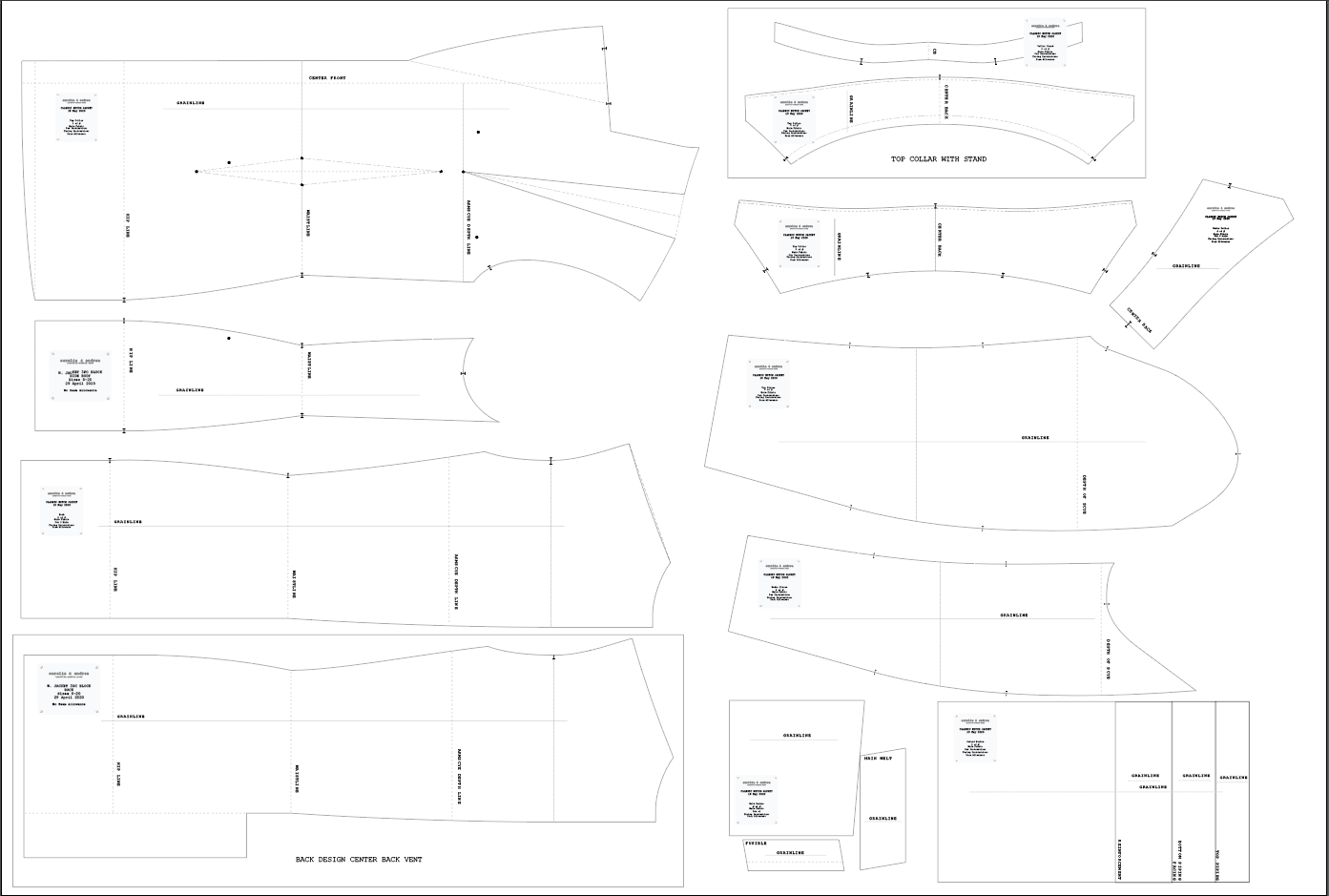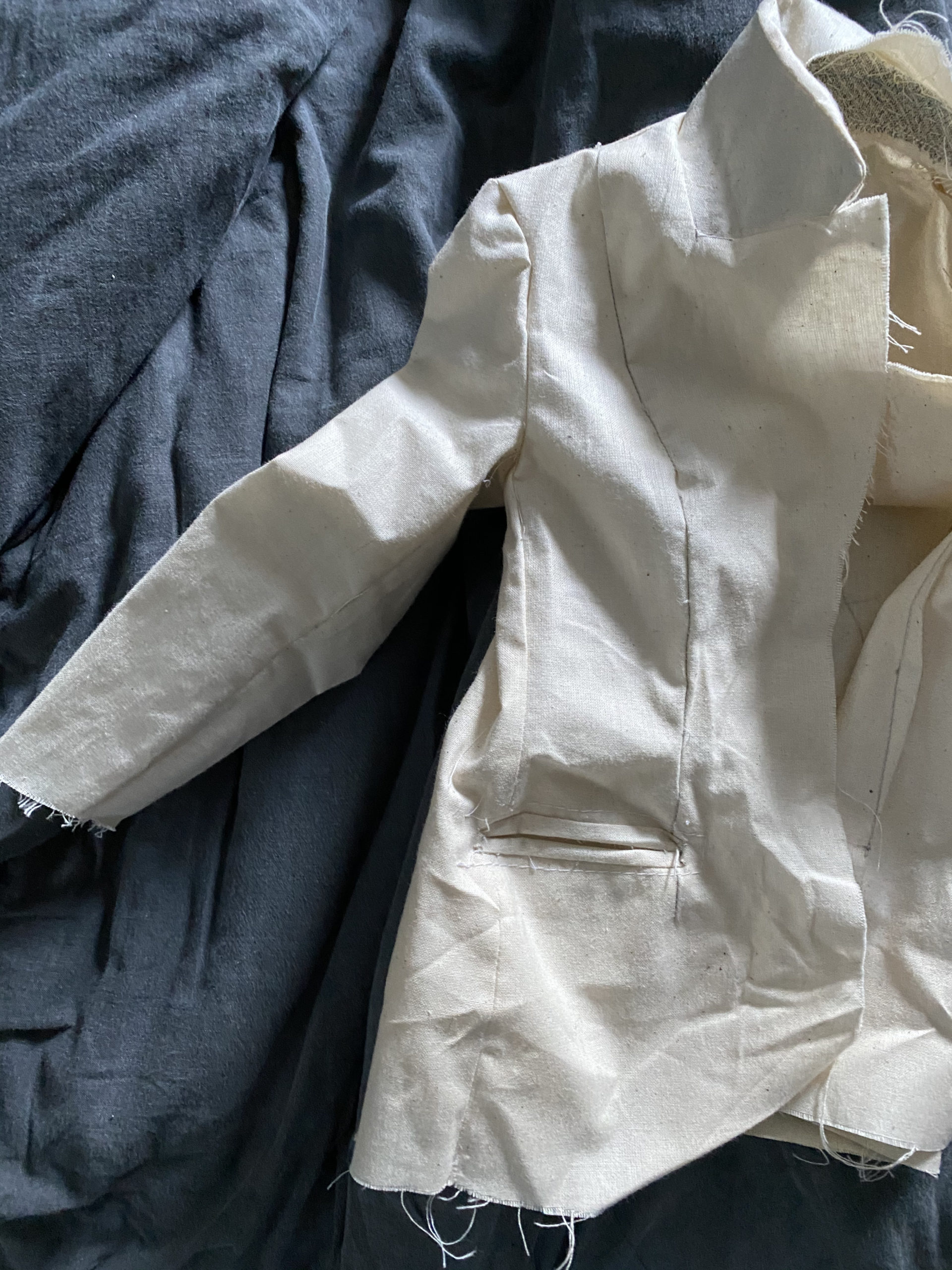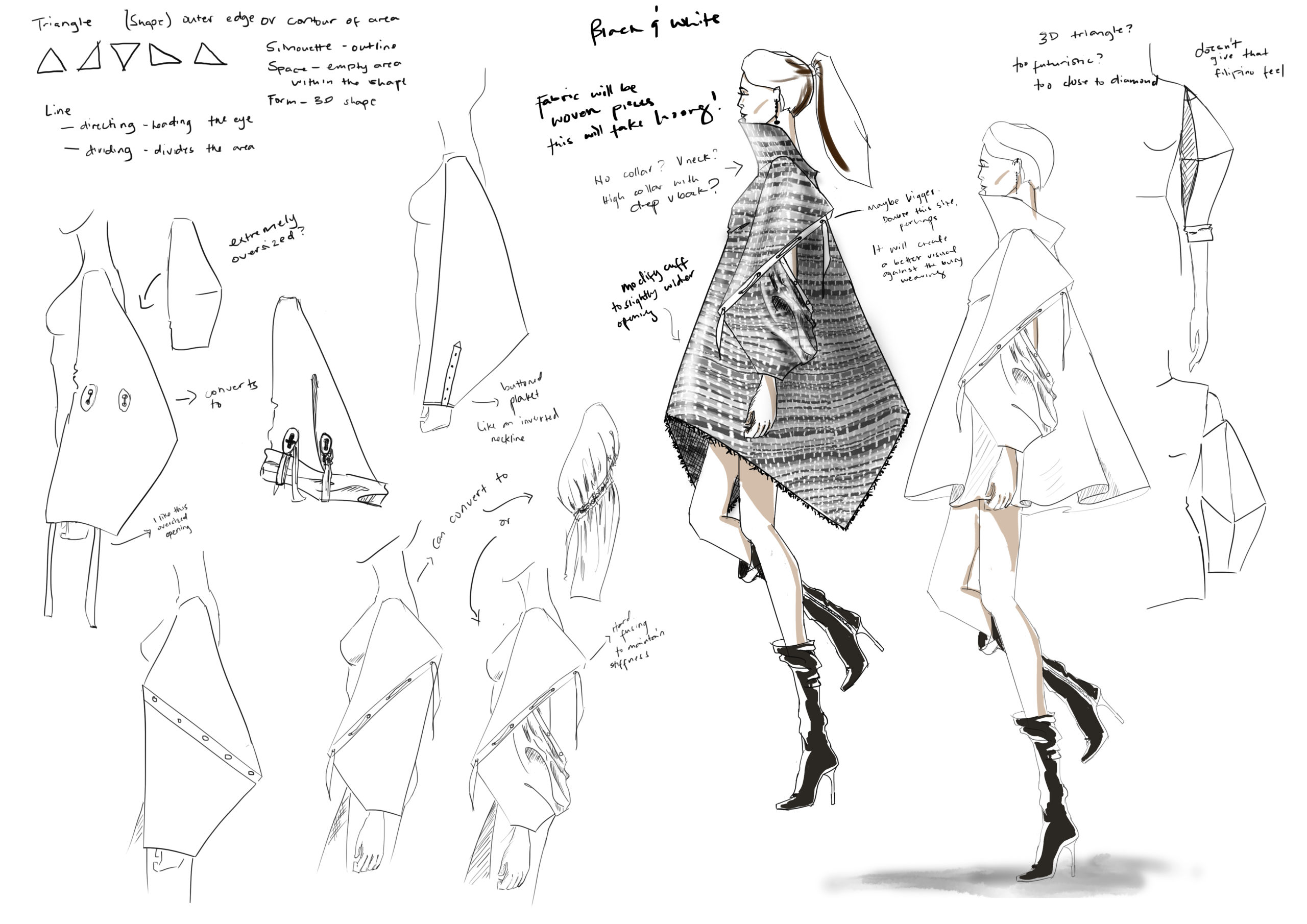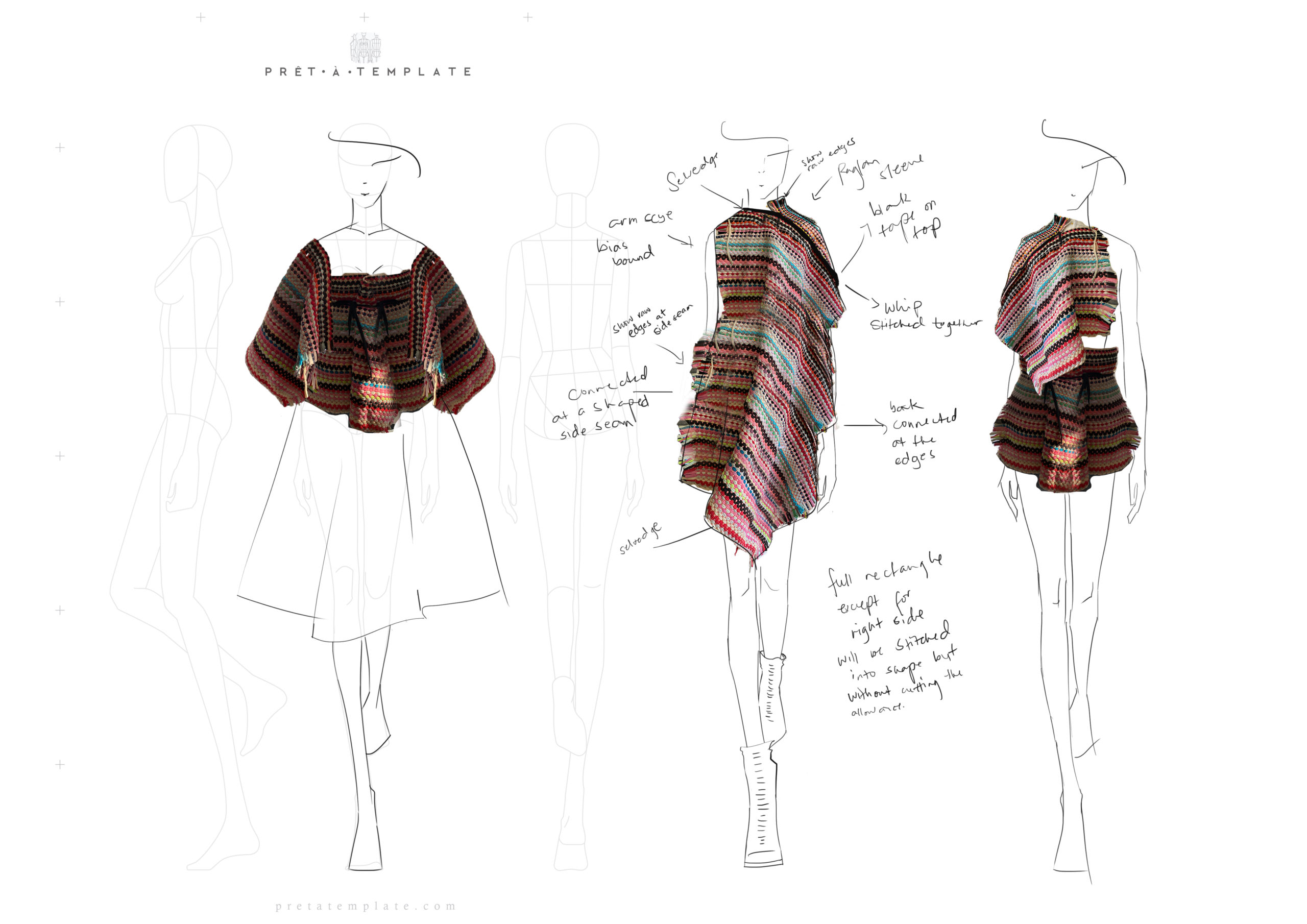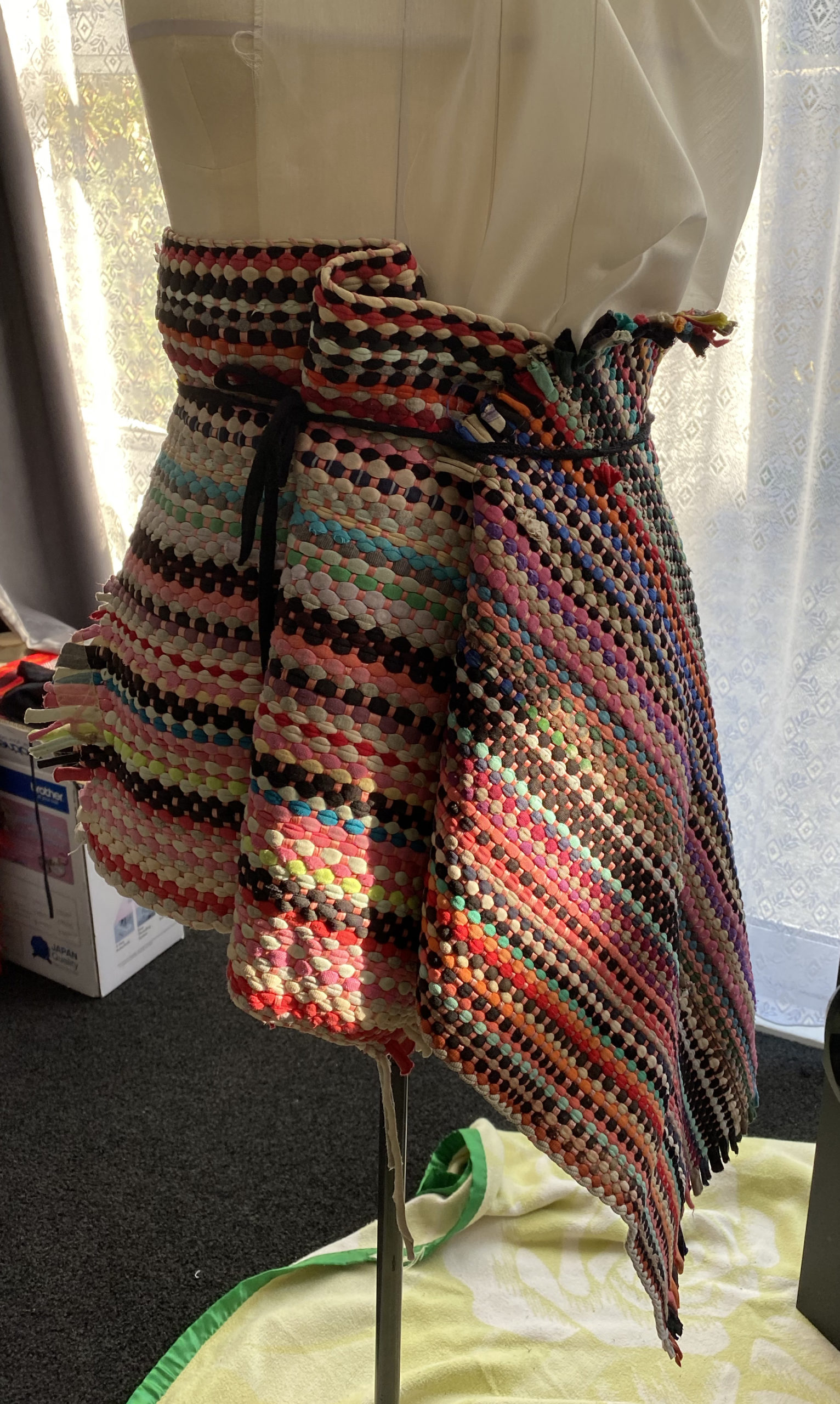Main Fabric There isn’t much choice of fabrics I needed for this project. The main reason is that the fabric, for the most part, will be woven and made by hand using old clothes. I have with me a full bag and a box of old clothes ready to be used as this is often how this rag weaving is often ...
Looking back, I never expected I’d be where I finished this project. While pattern making in Adobe Illustrator was one of the things I wanted to learn in this class, I didn’t think it will be the forefront of my project. If only I knew the multiple things I can achieve with the program, I would have ...
This is the preview of the patterns in a model in Adobe Illustrator. It is saved as a .ai file and cardboard is extendable. This is where pieces can be copied for manipulations or fixed. Ideally, however, there is a separate cutting table (a larger cardboard separate from this file) so as no to ...
There were a few reasons I had to sample the patterns at home. One, the country was on Covid-19 lockdown restrictions and printing wasn’t on the top computer essential business. Second, there are e-patterns being sold online that would need to be printed on a regular A4 sized paper. This is ...
Here is two-part video of how I drafted the two-piece sleeve pattern often used in a classic tailor jacket. The experience was a pretty long one as it is my first time drafting the sleeve patten at all. I don’t think I’ve ever done it even on paper. This is the beauty of digital pattern ...
I decided to create a variation of the collar where the stand is separate. This allows the collar to be shaped around the neck giving the design a more tailored finish. Here’s a fast version of the process. Probably one of the easiest to make after experiencing it at the Winter class paper.
This is the part of the design process where I reminded myself if the design principles and elements. I looked at silhouette, shape and space mostly for this part as it what best show the triangular shape. It provided winning ideas that represent the collection I believe.
Collaging wasn’t my strongest forte. However, in a project as such where sketching the fabric isn’t easy, collage is the best option. These are some of the sketches I made using the photos of the drapes I used in the draping stage of the process. I copied, twisted, flipped, and resized ...
Pinoy is a colloquial term for Filipinos, the people and culture of the Philippines, which is the main focus of this project. Specifically what it means to be a Filipino after colonization. The separation of social classes emphasizes the enduring effects of colonialism and therefore has great ...
After a few sketches to get my ideas out of my head, I needed to see how the fabric behaves when it’s on the body. Gladly I found two rags brought with us from the Philippines that I could use to do some draping. Unlike my previous experience in draping, pleating isn’t as easy with quite ...
